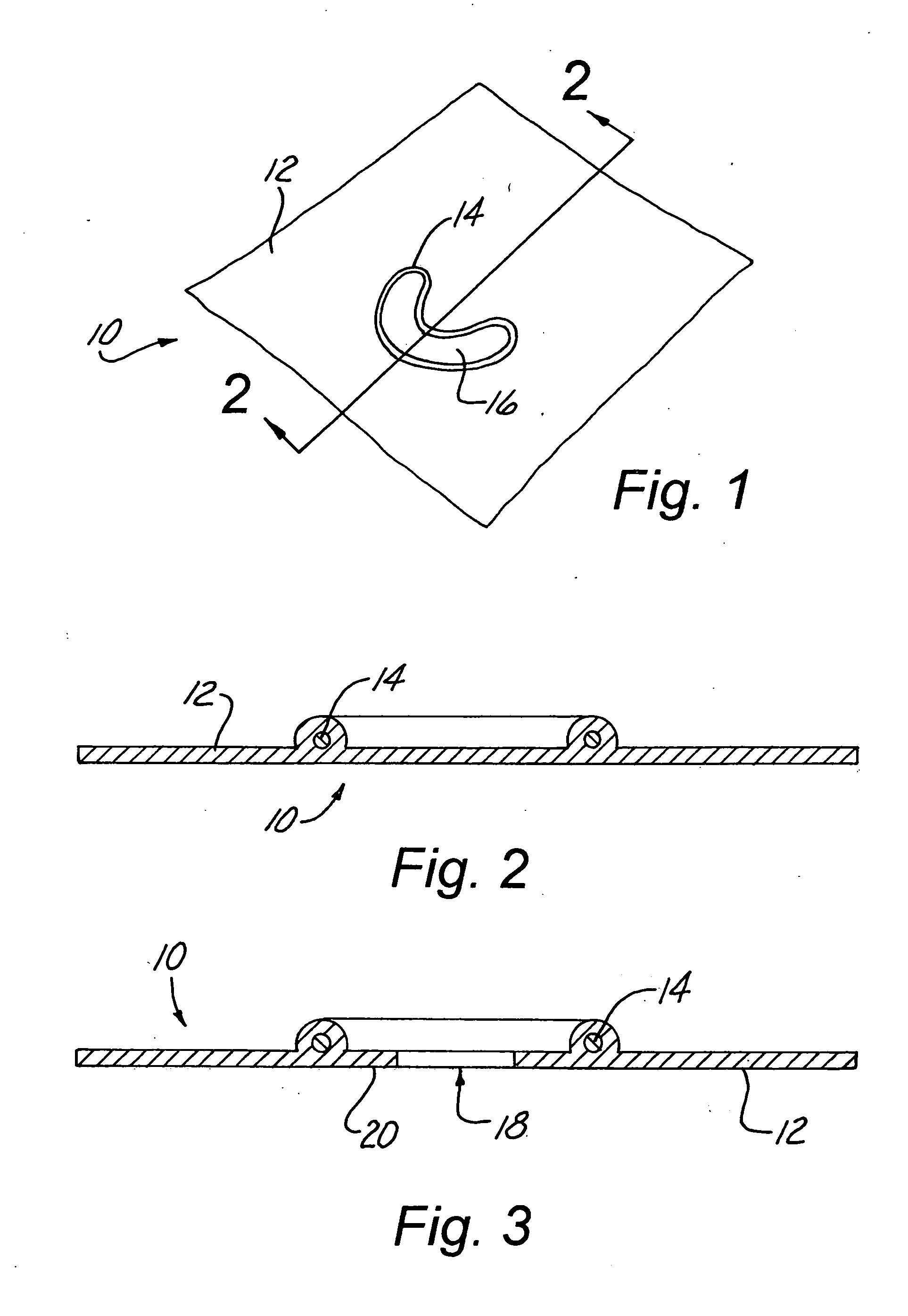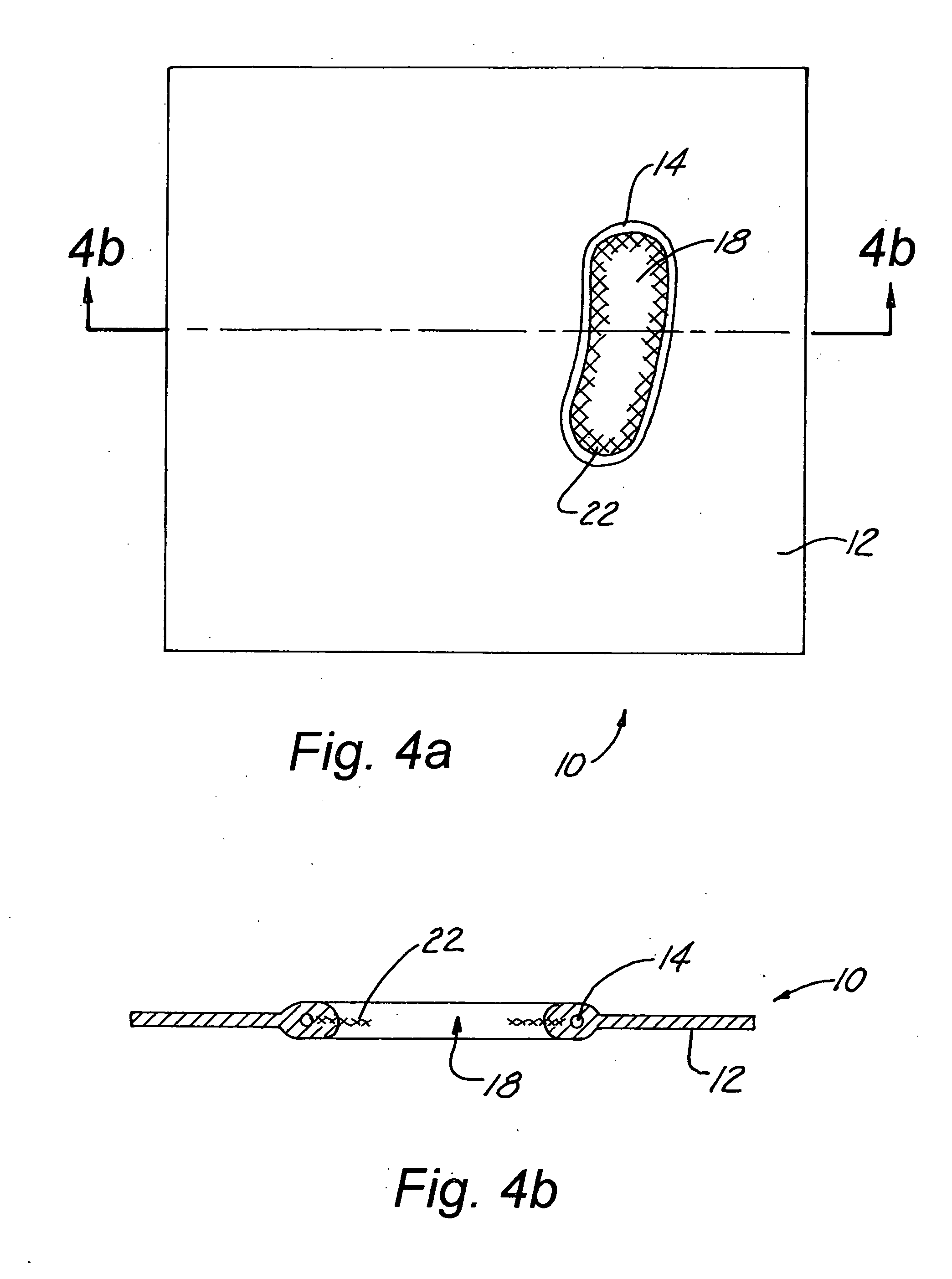Rubber Dams With Operative Inserts Which Isolate Anatomical Structures by Effectively Resisting External Vector Forces of Displacement
a technology of rubber dams and inserts, applied in the field of isolating rubber dams, can solve the problems of systematic design of alternative rubber dam membranes that address all, and achieve the effect of preventing the transmission of tensile forces and reducing strength
- Summary
- Abstract
- Description
- Claims
- Application Information
AI Technical Summary
Benefits of technology
Problems solved by technology
Method used
Image
Examples
Embodiment Construction
[0068] The general field isolation dams of the present invention may take a variety of forms or embodiments.
[0069] One embodiment of a general field isolation dam of the present invention is illustrated generally in FIG. 1 at 10. The dam 10 is formed of a sheet or membrane 12 of an elastomeric material, such as latex, neoprene, silicone, polyurethane or other polymeric material. A closed loop insert 14 is embedded within the membrane 12 and defines an interior area 16 of the membrane 12. While the closed loop insert 14 is illustrated to be a pair of spaced apart arcs with closed ends, the insert 14 can take a wide variety of shapes depending on the material used for the insert 14 and the particular field of application of the rubber dam 10. A cross-section of the dam 10, illustrated in FIG. 2, shows the insert 14 wholly embedded in the membrane 12.
[0070] The dam 10 may either be manufactured as illustrated in FIGS. 1 and 2, wherein the interior area 16 of the membrane is un-perfor...
PUM
 Login to View More
Login to View More Abstract
Description
Claims
Application Information
 Login to View More
Login to View More - R&D Engineer
- R&D Manager
- IP Professional
- Industry Leading Data Capabilities
- Powerful AI technology
- Patent DNA Extraction
Browse by: Latest US Patents, China's latest patents, Technical Efficacy Thesaurus, Application Domain, Technology Topic, Popular Technical Reports.
© 2024 PatSnap. All rights reserved.Legal|Privacy policy|Modern Slavery Act Transparency Statement|Sitemap|About US| Contact US: help@patsnap.com










